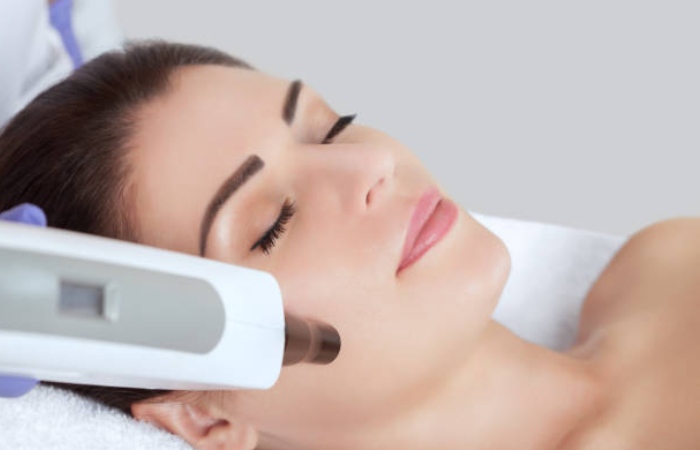About 85% of children aged 12 to 24 in the US develop acne, which is expected at other ages. Sufferers spend lots of dollars every year trying to get rid of acne or the marks they leave behind.
And why is it so difficult to get rid of acne? Because there are several different types of acne.
This means that treatment is not universal. Only by learning about the types of acne can you know how to treat them.
Luckily, this guide reveals the potential causes of acne and will help you determine what type of acne you have. Then you can take steps to get rid of it for good!
What does pimple placement mean?
Not only are there different types of acne, but there are also different reasons. You can control the cause of your acne by examining where it affects you the most.
Here are the most common places where most people get pimples:
- hairline
- Forehead and nose
- Cheek
- Jawline and chin
- Neck and back
Chin acne is often the result of a hormonal imbalance or a diet that doesn’t suit your body. Dirty pillows, mobile phones and un-removed makeup are the leading causes of skin pimples. Acne on your hairline or ears could be a sign of stress or an adverse reaction to hair products.
It is more difficult to determine the cause of acne on the forehead and nose. This could be due to stress, diet, or touching your face with dirty hands. However, it is also a common problem for people with oily skin.
If you have severe acne on your face, it may be due to oily skin, hormonal imbalance, or genetics. The same goes for acne on the neck and back. Some medicines can also cause acne as a side effect.
Remember that having acne does not mean you are unclean. Some of the most unsanitary people in the world have clear skin. Your only crime is unfortunate genetics causing acne!
Different types of acne and how to treat them

You can get many different types of acne in one of these acne-prone areas. Let’s take a look at these types and what they mean.
Black dots
Blackheads, also identified as open comedones, are a non-inflammatory and mild form of acne. They happen when sebum, dirt and dead skin cells get trapped in the pores. Blackheads are small and unlikely to leave acne scars, but they can be hard to eliminate.
But, there are many actions for blackheads, including over-the-counter skin cleansers. Exfoliating acids such as salicylic and retinol help break down trapped dirt in pores. You can also try salon treatments such as microdermabrasion or blue bright treatment.
Whiteheads

Whiteheads are the only extra kind of non-inflammatory acne known as locked comedones. They also occur when sebum and debris get trapped in the pores, but the pores close. Instead of a small black dot, white dots appear with a distinct white tip.
The treatments you use to get rid of blackheads are the same as for whiteheads. Dermatologists are unlikely to prescribe medications to treat blackheads and whiteheads. This is because the side things of acne medications are often not worth the effort to achieve the benefits.
Papules
Papules are a type of inflammatory acne. You won’t be surprised to learn this type of acne is worse than non-inflammatory acne. Papules are what most people call pimples.
They occur when bacteria and debris get into the pores or hair follicles. But unlike black and whiteheads, they become red and swollen and can be painful.
Ready-made skin care products can be effective in treating papular acne. But if you suffer from multiple blemishes, your dermatologist may prescribe a mild, medicated topical cream. Benzoyl peroxide is a common first step.
Pustules
This is another type of inflammatory acne, much like papules. They are just blemishes with a small white tip filled with pus. They are no better or worse than papules; unless they burst, they are more likely to leave acne scars.
Blackheads, whiteheads, blemishes, and bumps are the most common pimples. Even people without acne sometimes experience one of these four types.
nodules
Nodules are a more severe type of demagogic acne. They are extra like crowds and can be difficult and painful.
Mild forms of acne develop closer to the top coating of the skin. But nodes form when sebum and debris become trapped in the deeper layers of skin in a damaged hair follicle. They nearly always hold pus and then do not form a white tip like pustules because the pus is also trapped in the skin.
If your nodular acne worsens, it may join other nodules to form conglobates. This type of acne is practically impossible to treat with over-the-counter medications. See your doctor, who can prescribe both oral and topical medications.
Also Read: dermal fillers
Acne cysts
Acne cysts are the most plain form of inflammatory acne. Like nodules, they are big and painful and grow in the profound layers of the skin. They also contain pus, sebum and debris.
But unlike nodules, pimple cysts also contain blood, so they feel soft to the touch rather than complex. See a doctor who can prescribe strong medications to treat acne.
This type of acne most often causes scarring. Once you remove your acne cysts, reflect chemical skin or laser management to smooth out your skin.
Knowledge is power in the match against acne.
Not all acne is the same. There are many types of acne, including milder and more severe types. It can also appear in different places on the skin for various reasons.
But now that you know what your acne means and what it says about you, you can treat it better.

